Abstract
1. The effects of ouabain, digoxin, digoxigenin monodigitoxoside, digoxigenin bisdigitoxoside and digitoxigenin bisdigitoxoside on the force of contraction and on the transmembrane action potential were compared in isolated papillary muscles of guinea-pigs.
2. All cardiac glycosides studied had a dose-dependent positive inotropic effect and simultaneously shortened the duration of the action potential at all levels of repolarization from the start of drug action.
3. In every instance, the reduction of the action potential duration developed more slowly than the increment in contractile force. However, the ratios between the two rates were independent of the concentrations used and seemed to be characteristic for the individual cardiac glycosides.
4. All cardiac glycosides had a biphasic effect on the time-to-peak tension. An initial increase was followed by a dose-dependent decrease.
5. The results are discussed with respect to the possible sites of action. Taking into account the different rates as well as the different ratios, it is proposed that more than one site of action is involved in producing the different effects of cardiac glycosides on heart muscle.
Full text
PDF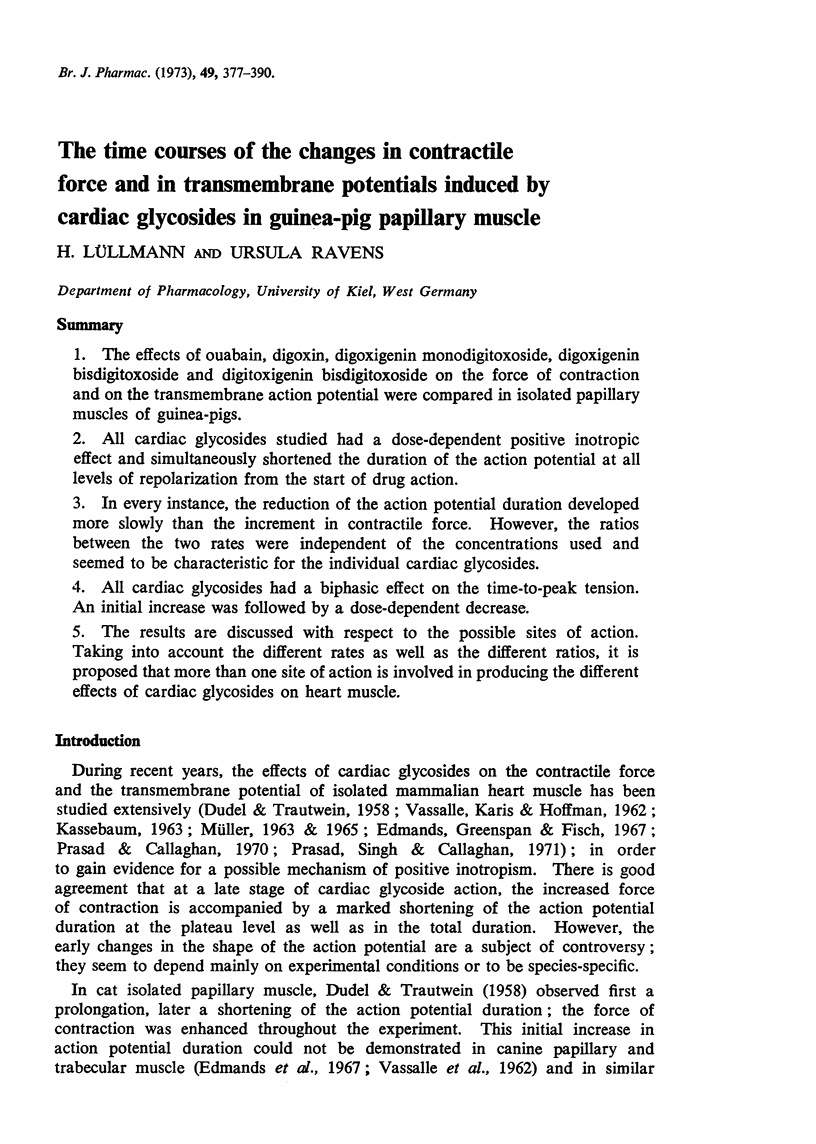
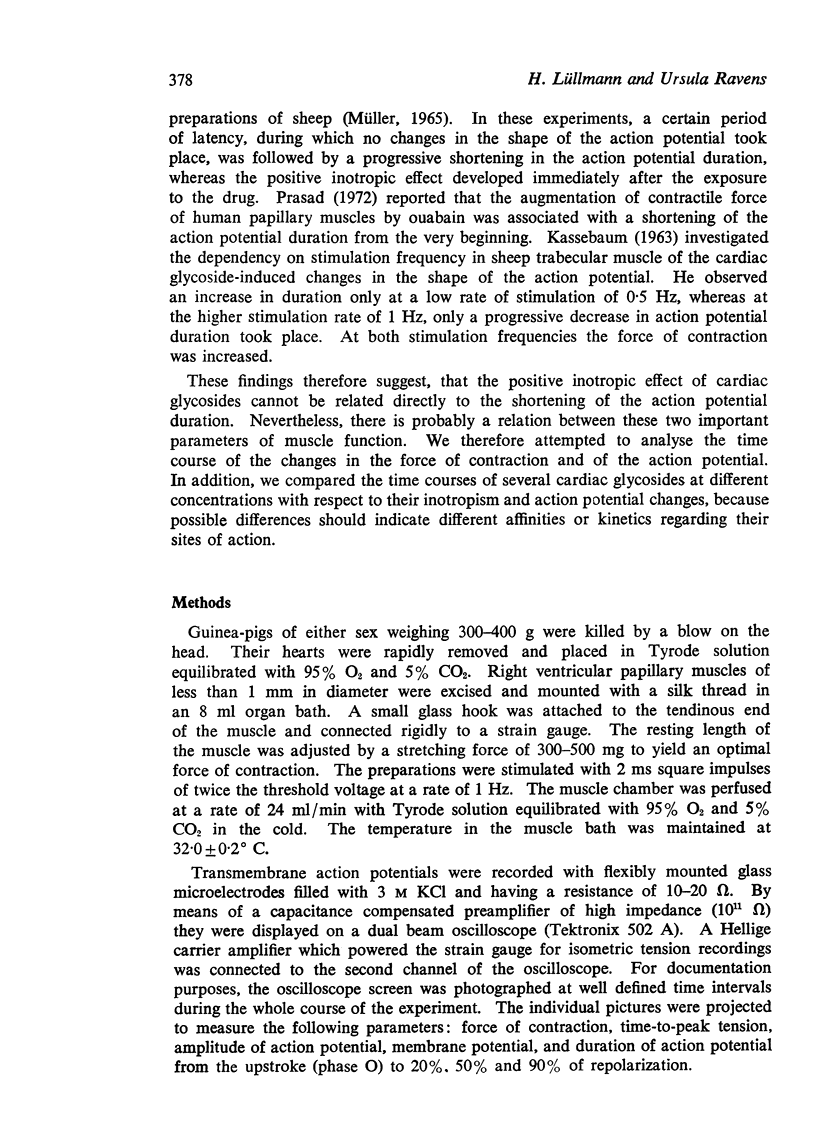
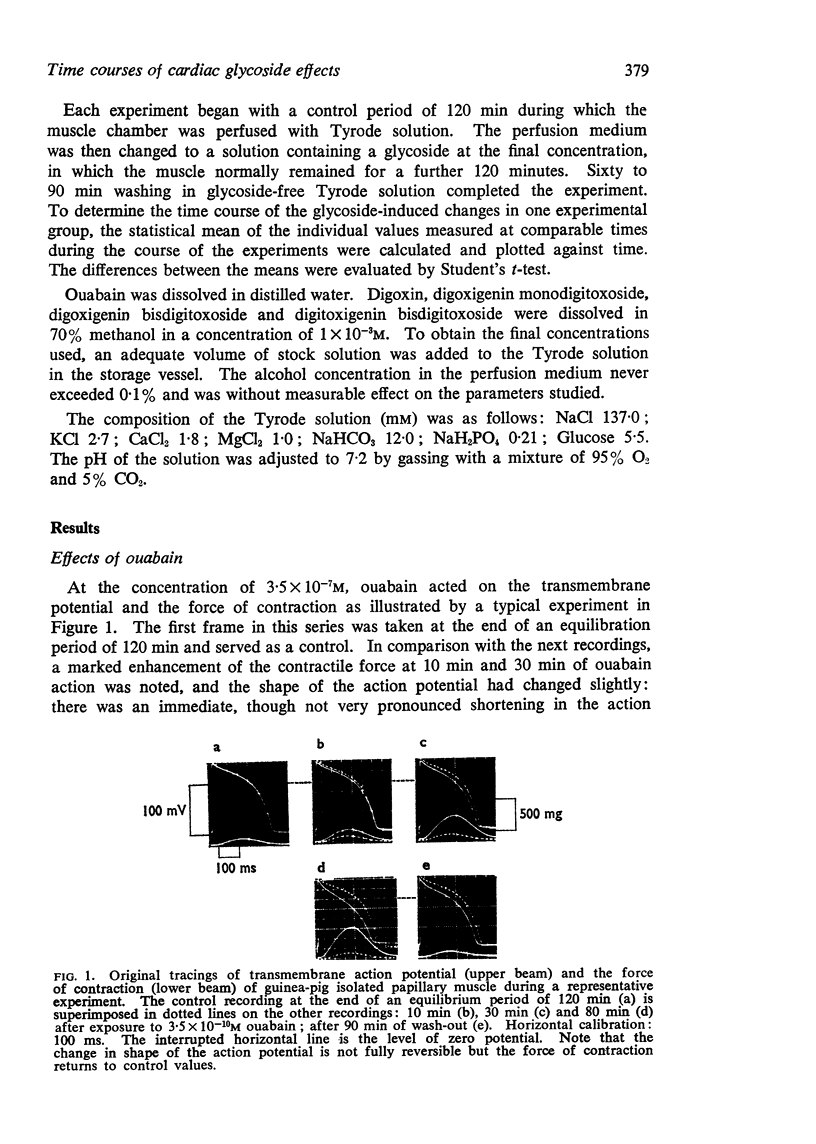
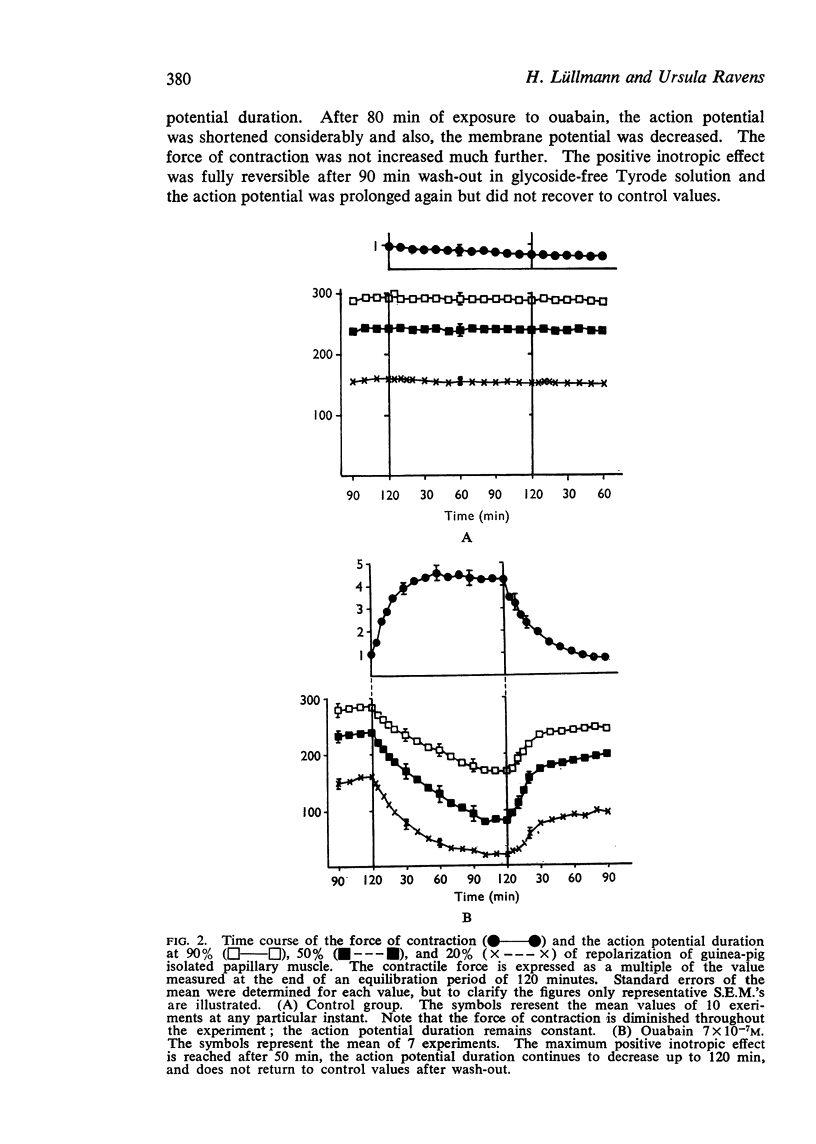

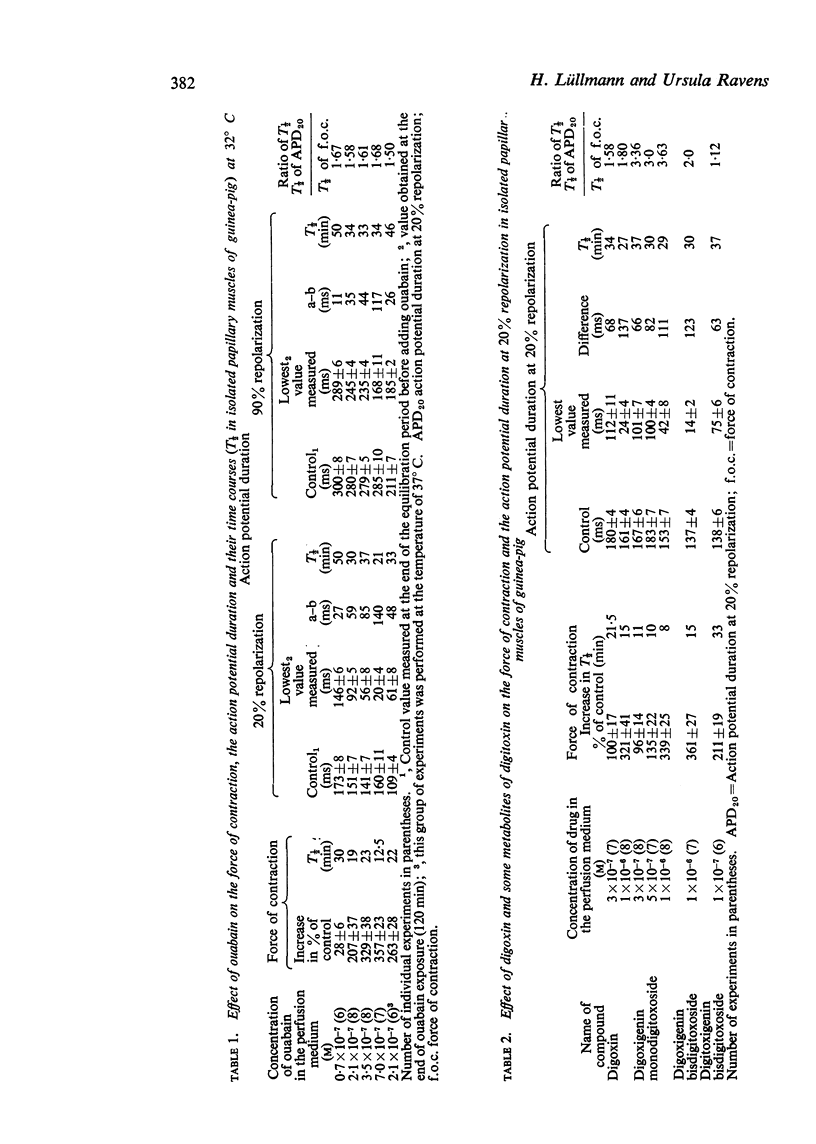
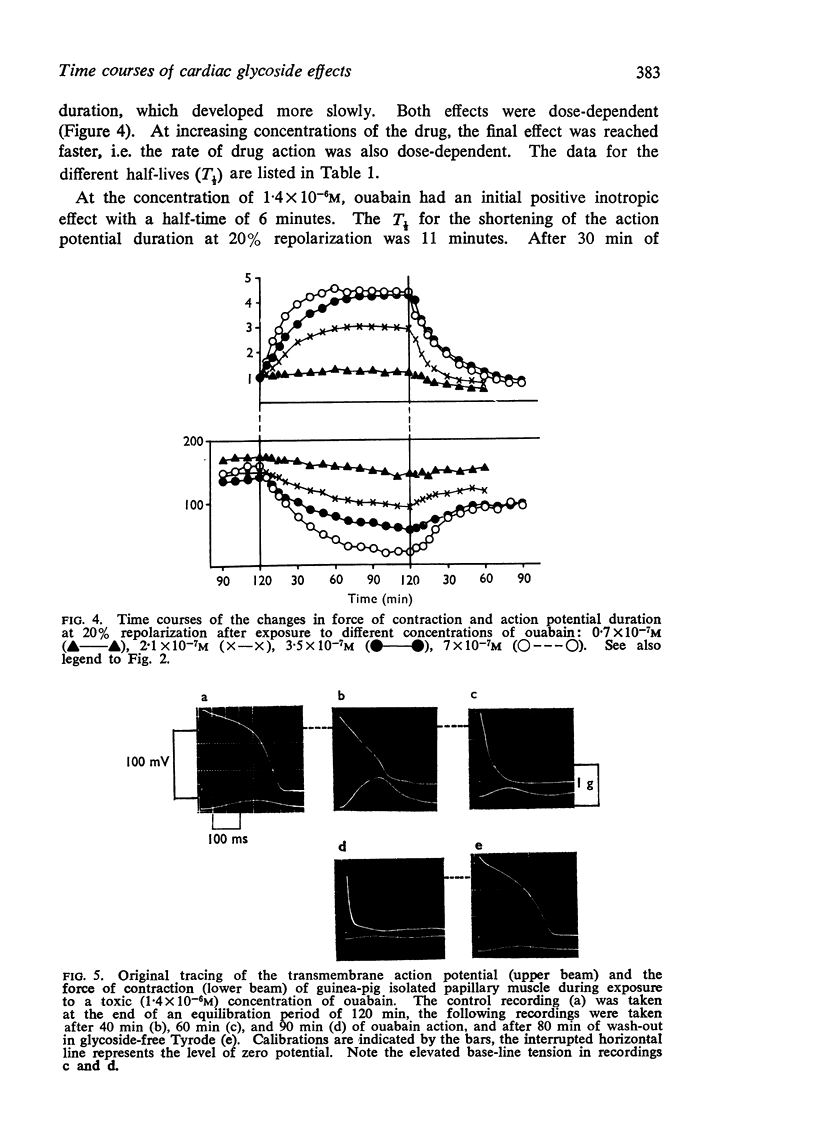
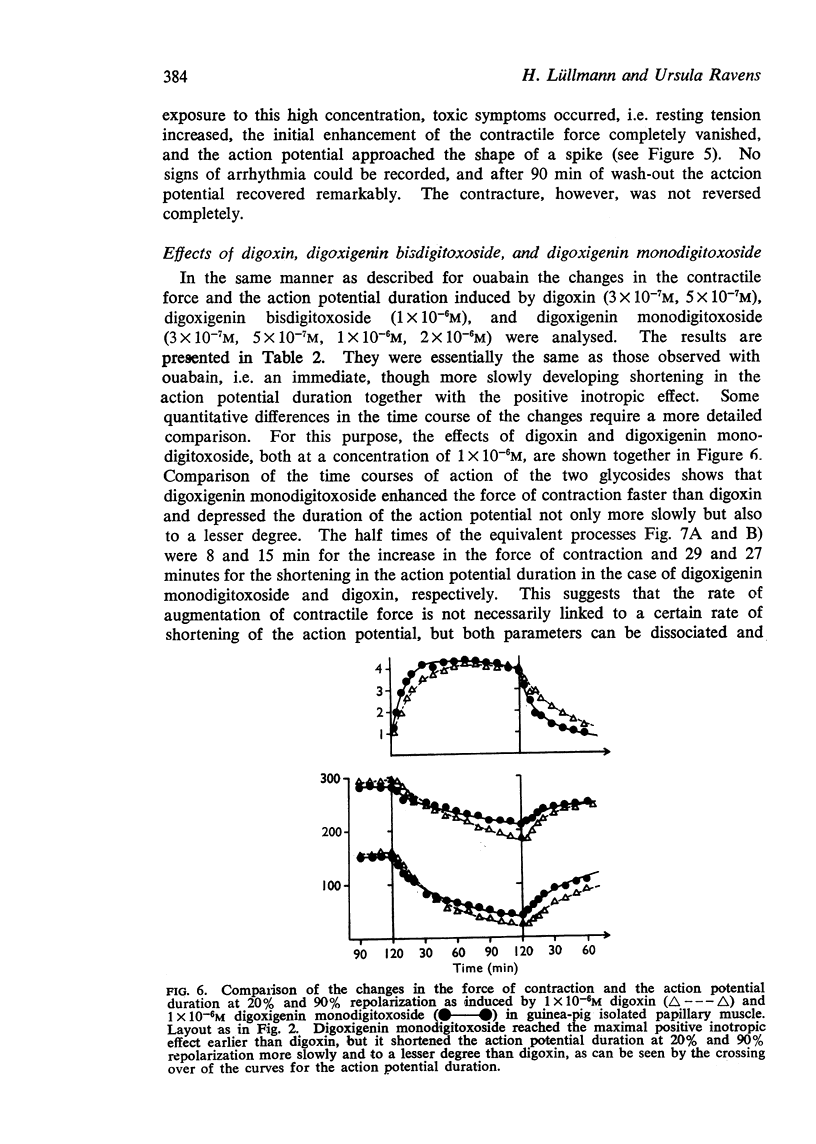
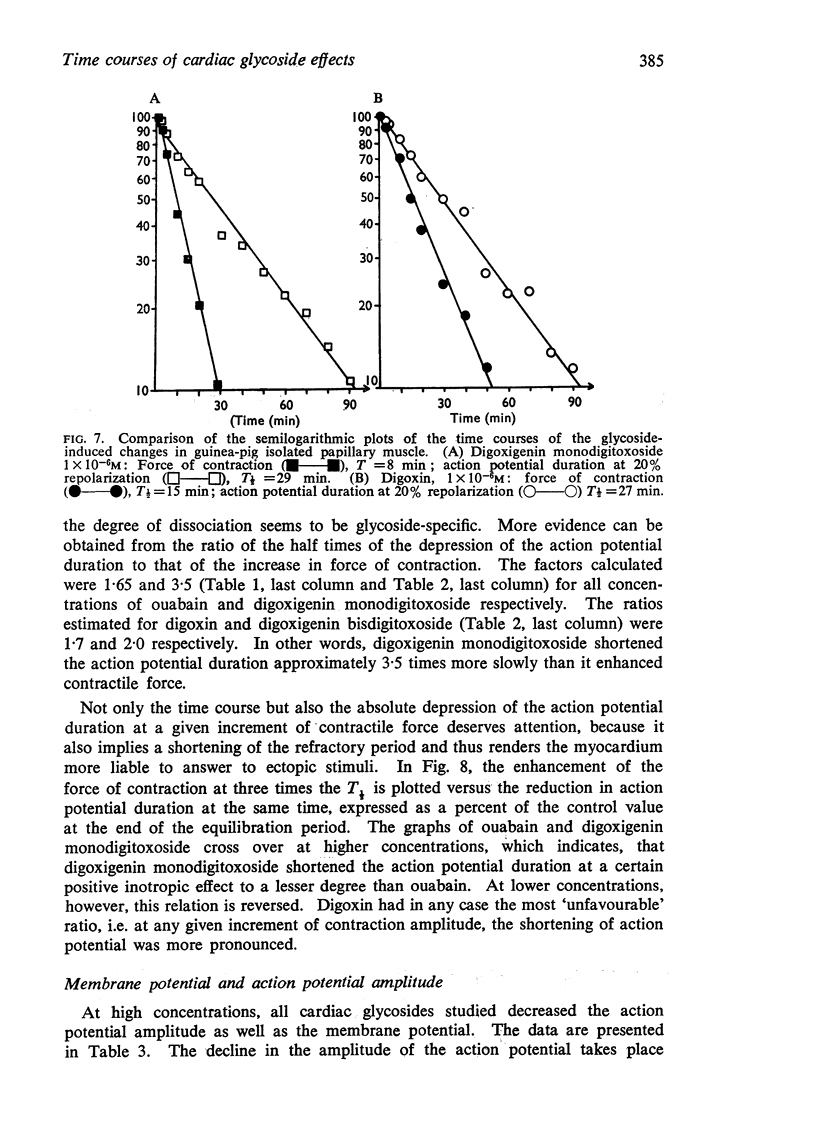
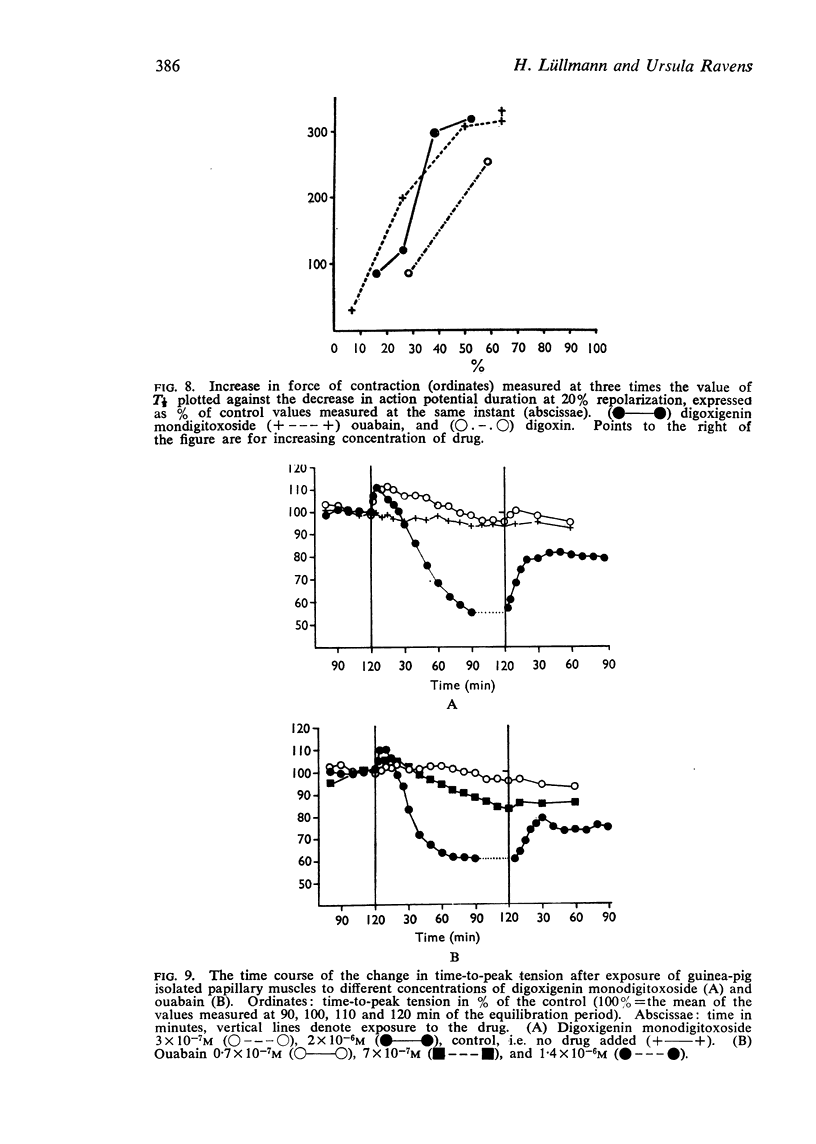
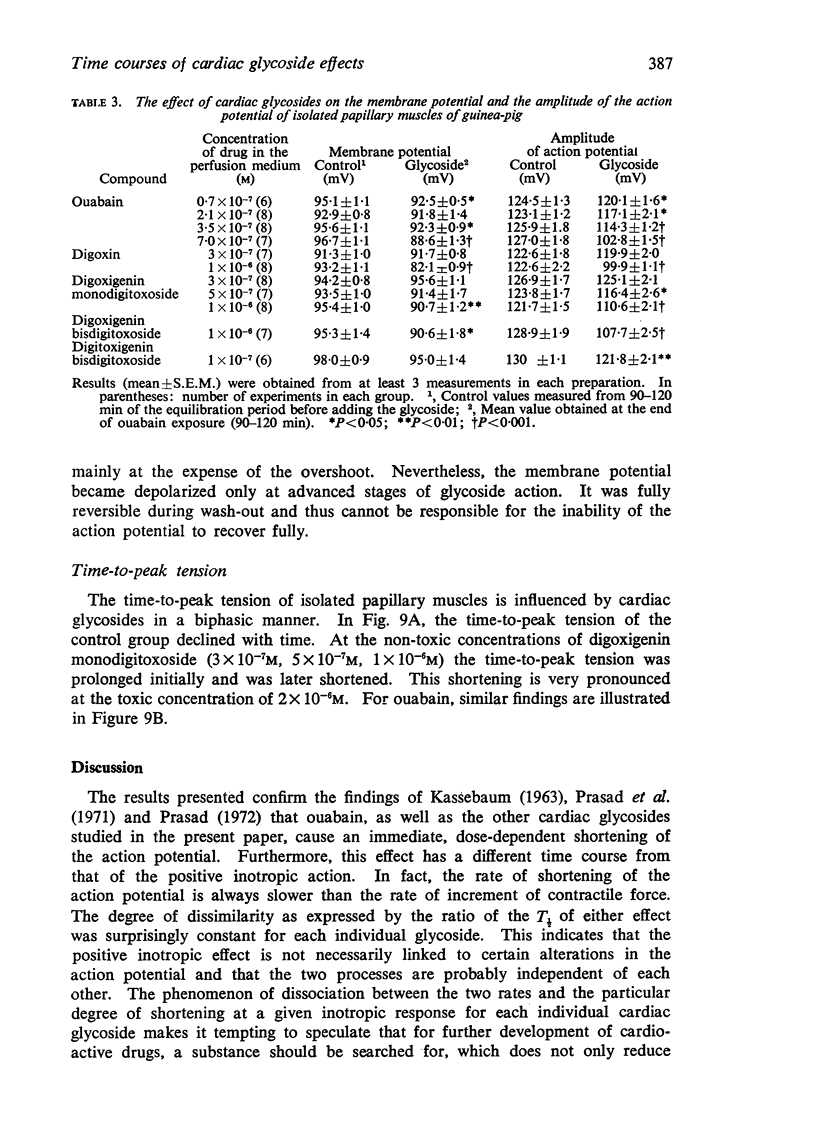
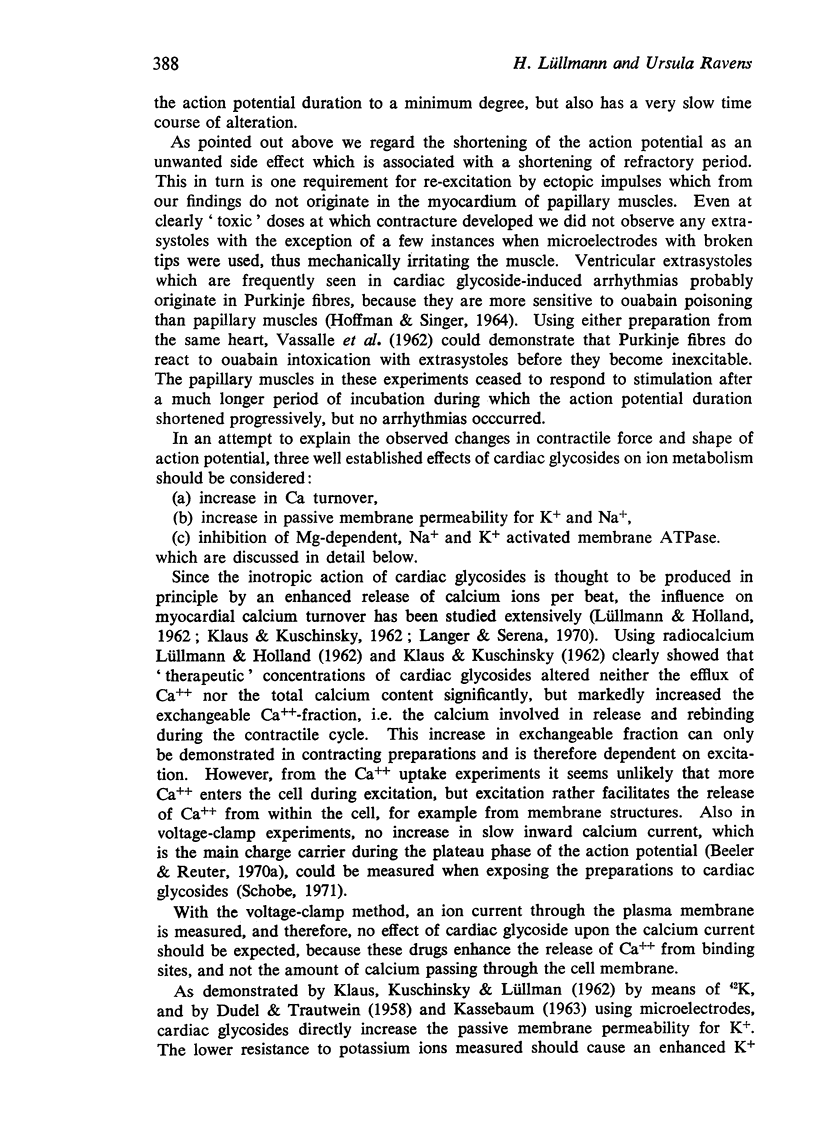
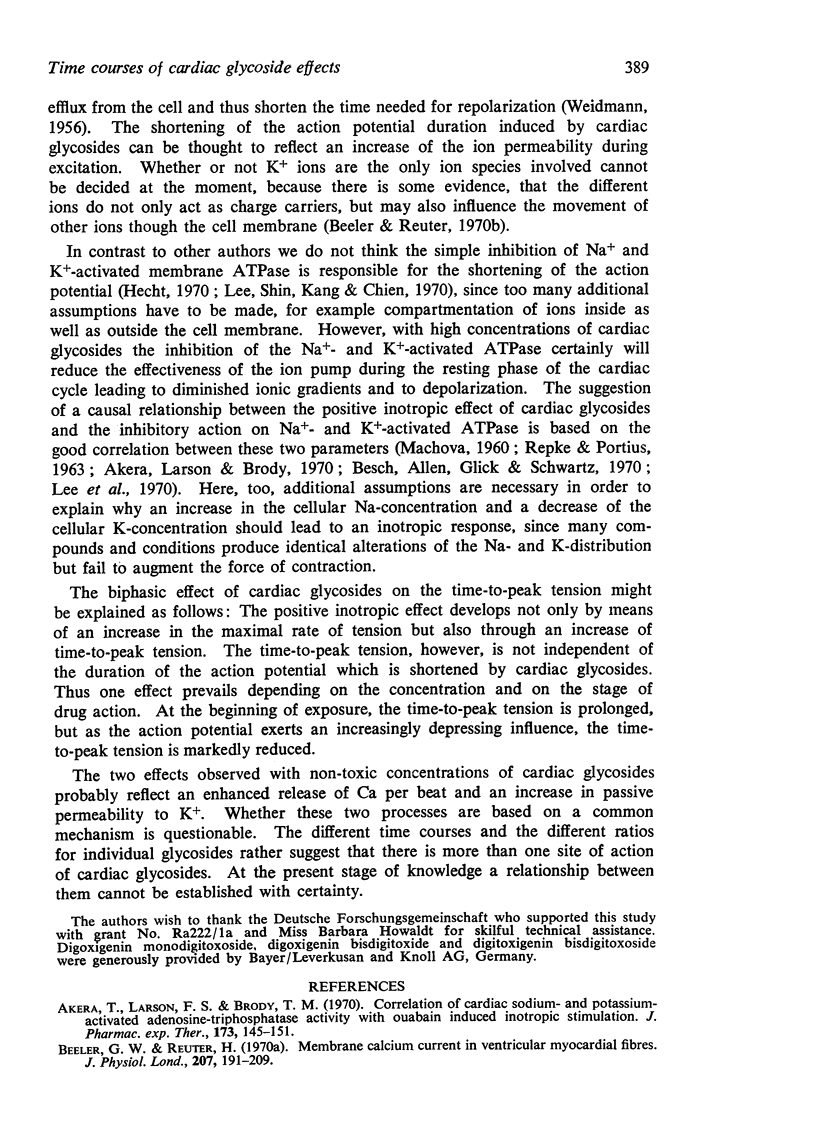

Selected References
These references are in PubMed. This may not be the complete list of references from this article.
- Akera T., Larsen F. S., Brody T. M. Correlation of cardiac sodium- and potassium-activated adenosine triphosphatase activity with ouabain-induced inotropic stimulation. J Pharmacol Exp Ther. 1970 May;173(1):145–151. [PubMed] [Google Scholar]
- Beeler G. W., Jr, Reuter H. Membrane calcium current in ventricular myocardial fibres. J Physiol. 1970 Mar;207(1):191–209. doi: 10.1113/jphysiol.1970.sp009056. [DOI] [PMC free article] [PubMed] [Google Scholar]
- Beeler G. W., Jr, Reuter H. The relation between membrane potential, membrane currents and activation of contraction in ventricular myocardial fibres. J Physiol. 1970 Mar;207(1):211–229. doi: 10.1113/jphysiol.1970.sp009057. [DOI] [PMC free article] [PubMed] [Google Scholar]
- Besch H. R., Jr, Allen J. C., Glick G., Schwartz A. Correlation between the inotropic action of ouabain and its effects on subcellular enzyme systems from canine myocardium. J Pharmacol Exp Ther. 1970 Jan;171(1):1–12. [PubMed] [Google Scholar]
- DUDEL J., TRAUTWEIN W. Elektrophysiologiche Messungen zur Strophanthinwirkung am Herzmuskel. Naunyn Schmiedebergs Arch Exp Pathol Pharmakol. 1958;232(2):393–407. [PubMed] [Google Scholar]
- Edmonds R. E., Greenspan K., Fisch C. An electrophysiologic correlate of ouabain inotrophy in canine cardiac muscle. Circ Res. 1967 Oct;21(4):515–524. doi: 10.1161/01.res.21.4.515. [DOI] [PubMed] [Google Scholar]
- Hecht H. H. The cellular action of digitalis compounds. Med Clin North Am. 1970 Jan;54(1):221–234. [PubMed] [Google Scholar]
- KASSEBAUM D. G. Electrophysiological effects of strophanthin in the heart. J Pharmacol Exp Ther. 1963 Jun;140:329–338. [PubMed] [Google Scholar]
- KLAUS W., KUSCHINSKY G., LUELLMANN H. [On the relation between positive inotropic effect of digitoxigenin, potassium flux and intracellular ion concentrations in the myocardium]. Naunyn Schmiedebergs Arch Exp Pathol Pharmakol. 1962;242:480–496. [PubMed] [Google Scholar]
- KLAUS W., KUSCHINSKY G. [On the effect of digitoxigenin on the cellular calcium exchange in heart muscle tissue]. Naunyn Schmiedebergs Arch Exp Pathol Pharmakol. 1962;244:237–253. [PubMed] [Google Scholar]
- LULLMANN H., HOLLAND W. Influence of ouabain on an exchangeable calcium fraction, contractile force, and resting tension of guinea-pig atria. J Pharmacol Exp Ther. 1962 Aug;137:186–192. [PubMed] [Google Scholar]
- Langer G. A., Serena S. D. Effects of strophanthidin upon contraction and ionic exchange in rabbit ventricular myocardium: relation to control of active state. J Mol Cell Cardiol. 1970 Mar;1(1):65–90. doi: 10.1016/0022-2828(70)90029-5. [DOI] [PubMed] [Google Scholar]
- Lee K. S., Klaus W. The subcellular basis for the mechanism of inotropic action of cardiac glycosides. Pharmacol Rev. 1971 Sep;23(3):193–261. [PubMed] [Google Scholar]
- MACHOVA J. Relationship between the effectiveness of cardiac glycosides in cats and their interference with red cell potassium transport. Experientia. 1960 Dec 15;16:553–554. doi: 10.1007/BF02158455. [DOI] [PubMed] [Google Scholar]
- MUELLER P. OUABAIN EFFECTS ON CARDIAC CONTRACTION, ACTION POTENTIAL, AND CELLULAR POTASSIUM. Circ Res. 1965 Jul;17:46–56. doi: 10.1161/01.res.17.1.46. [DOI] [PubMed] [Google Scholar]
- Prasad K., Callaghan J. C. Influence of glucose metabolism on ouabain-induced changes in the transmembrane potential and contraction of human heart in vitro. Can J Physiol Pharmacol. 1970 Dec;48(12):801–812. doi: 10.1139/y70-115. [DOI] [PubMed] [Google Scholar]
- Prasad K., Singh S., Callaghan J. C. Transmembrane potential and contraction of human heart in relation to potassium and ouabain. Jpn Heart J. 1971 May;12(3):290–304. doi: 10.1536/ihj.12.290. [DOI] [PubMed] [Google Scholar]
- Prasad K. Transmembrane potential, contraction and ATPase activity of human heart in relation to ouabain. Jpn Heart J. 1972 Jan;13(1):59–72. doi: 10.1536/ihj.13.59. [DOI] [PubMed] [Google Scholar]
- REPKE K., PORTIUS H. J. UBER DIE IDENTITAET DER IONENPUMPEN-ATPASE IN DER ZELLMEMBRAN DES HERZMUSKELS MIT EINEM DIGITALIS-REZEPTORENZYM. Experientia. 1963 Sep 15;19:452–458. doi: 10.1007/BF02150643. [DOI] [PubMed] [Google Scholar]
- VASSALLE M., KARIS J., HOFFMAN B. F. Toxic effects of ouabain on Purkinje fibers and ventricular muscle fibers. Am J Physiol. 1962 Sep;203:433–439. doi: 10.1152/ajplegacy.1962.203.3.433. [DOI] [PubMed] [Google Scholar]


